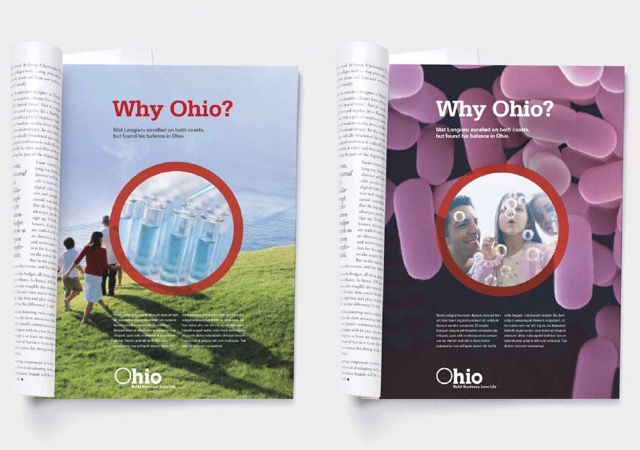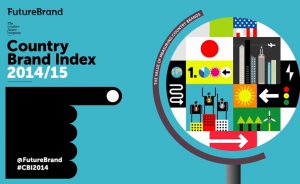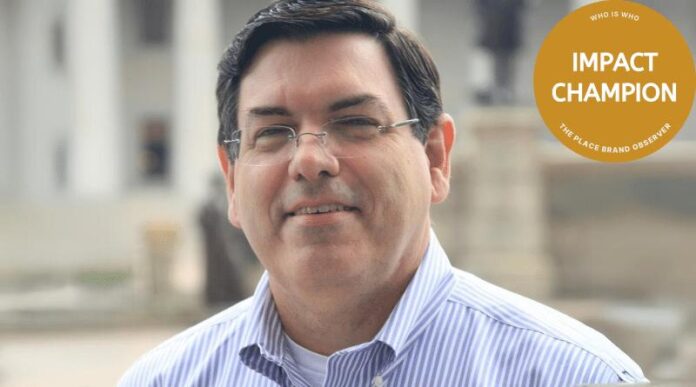Ed Burghard in this interview reflects on his long career as marketer for Procter & Gamble and his more recent assignment as head of the place branding and economic development task force for the state of Ohio, USA.
He also reveals the top five ingredients for successful place branding, and how his Strengthening Brand America project supports the American Dream.
Learn about:
- What place marketing is about;
- What place branding is about;
- Which lessons learned in product and corporate branding can be reapplied in place branding;
- The five top ingredients for a successful place branding strategy;
- The biggest challenge for place branding work to succeed;
- The best way to measure the success of economic development and place branding initiatives;
- Advice to early career place branding professionals.
Ed, when did you first come across the concept of place branding?
In 2005, Ohio’s Governor Taft asked Procter & Gamble for help in setting up a non-profit company to brand the state. I accepted the challenge as an Executive on loan. For me it was a great opportunity to test the effectiveness of the P&G branding model on a conceptual product, and a chance to experience leading a small company start-up. Prior to getting the assignment I had absolutely no idea the field of place branding even existed.
What does place branding mean for you?
This is a great question, because I think the profession needs a consistent understanding of what place branding really is. I differentiate place branding from place marketing.
To me, place marketing is about managing the image of your location. This is done through an effective communications effort and the tactics associated with it. Managing image includes correcting misperceptions and ensuring an understanding of your place’s promise. It deals with the “current state” of your place, warts and all.
Marketing helps create broad interest in considering your place for capital investment or talent attraction. It sets an expectation for what the experience will be.
In contrast, place branding is about proactively managing your location’s identity. Identity is what you are working to transform your place into. Think of it as the “future state”. Therefore, branding includes creating a strategic plan to guide your place development efforts. The plan horizon is typically 10-years, and includes strategic choices on asset creation, infrastructure investment as well as public policy reform.
In addition, branding includes making certain your place promise is consistently delivered across a complex set of touch points. It requires you to educate and keep many of your constituents on the “same page”.
I view place selling and place marketing as subset activities of place branding.
Having been a marketer for Procter & Gamble for almost 27 years (1983 – 2009), how does product branding differ from the branding of places?
The tactics and the leadership challenges are clearly different for place branding than for product and corporate branding. But those also differ between branding of prescription pharmaceuticals and soap, for instance.
The branding principles are essentially the same. Lessons learned in product and corporate branding can be reapplied in place branding.
People sometimes argue that the degree of control over the branding elements is also very different. But those people have never had the experience of dealing with demanding customers like WalMart. The perception of control for corporate or product brands they believe exists is basically an illusion.
Why did you decide to move from the branding of products (e.g. drugs) to the branding of places (the state of Ohio)?
It was a unique opportunity for me to help fulfill Procter & Gamble’s corporate mission of touching lives and improving life. By accepting the assignment to lead the branding effort for Ohio, I could positively impact the lives of roughly 11 million residents. The opportunity to make a legacy contribution was highly appealing to me. I think I have a Don Quixote gene in my DNA.
Your most memorable moment as Executive Director of the Ohio Business Development Coalition during 2005-2011?
I could say Ohio’s winning the Site Selection Governor’s Cup in 2006, 2007, 2008, 2009 and 2011 for the greatest number of capital investment deals nationally were memorable moments. Certainly, it suggests the Ohio branding work was effective.
But, I’d have to say the Ohio Business Development Coalition surviving and thriving under three Gubernatorial administrations (Taft, Strickland, Kasich) is something I am exceptionally proud of. Based in part on the proven track record of the effort, in 2011 Governor Kasich expanded the vision and created the Jobs Ohio organization to manage the state branding and sales efforts.

Which are the main challenges for place branding, from an economic development perspective?
The biggest challenge I see is the time horizon for elected officials and place branding are out of sync. It is hard to keep public officials focused on long-term success when they are worried about their ability to get reelected. This often results in an over focus on short-term optics.
Funding at competitive levels is always a challenge. And, I would add aligning the budgets of various organizations playing a meaningful role in place brand strategy execution (e.g. community developers, workforce developers, educational institutions, etc.) is a major challenge.
Lastly, I’d suggest branding skill mastery is a real problem. Most communities do not have a person skilled in branding on staff. As a consequence, strategy takes a back seat to tactics, and branding tends to be subjugated to the creation of a logo and tagline.
Which rankings do you use to measure success of place branding initiatives?
In general I favor perceptual rankings that provide actionable insights.
For the USA, I focus hard on Xavier University’s American Dream Composite Index as an end measure of success. It reflects how residents feel about their progress in life.
 In addition I pay attention to FutureBrand’s Country Brand Index study. One thing I really like about the FutureBrand philosophy is the recognition that country brands have to manage many touch points – advertising and public relations, political representation, business climate, cultural ambassadorship, tourism and product exports.
In addition I pay attention to FutureBrand’s Country Brand Index study. One thing I really like about the FutureBrand philosophy is the recognition that country brands have to manage many touch points – advertising and public relations, political representation, business climate, cultural ambassadorship, tourism and product exports.
I also watch the Anholt-GfK Roper Nation Brands Index. The study looks at a nation’s global ‘image’ by evaluating six dimensions – Exports, Governance, Culture and Heritage, People, Tourism, and Investment and Immigration.
Why did you start your Strengthening Brand America project?
In 2009, I decided to dedicate myself to helping the economic development profession master place branding as a strategic choice for improving local community prosperity. I created the Strengthening Brand America Project as an educational platform dedicated to advancing a “hands-on” understanding of the craft.
My belief is that by creating more investment worthy local communities, in aggregate we will create a stronger Brand America. The website contains practical information on how to reapply the principles of product and corporate branding to help make locations more competitive for capital investment.
Particular emphasis is in the areas of leadership, strategic planning, image management, identity creation, and effective communication. And while the website is clearly US focused, the learning certainly has global application.
Which news/social/online media do you follow for economic development and place branding insights?
Obviously, I follow The Place Brand Observer. I think you are doing a great job in covering the field and I’d like to encourage you to continue doing so.
While I don’t always agree with their position on topics, I do routinely follow the International Economic Development Council writings.
I read Development Counsellors International blog and follow Andy Levine’s (President DCI) blog on Forbes magazine.
I am enthralled with Della Rucker’s Wise Economy Workshop blog. And I routinely read everything Dean Barber writes. Otherwise, I look to relevant LinkedIn Groups to keep up on place branding progress.
Your advice to early career place branding professionals?
Don’t ignore development of skills in strategy development and conflict resolution. Both will serve you well going forward. Never assume you really understand your customer needs. Get out and talk with them frequently. Needs change constantly and you need to continuously stay in touch.
Don’t be afraid to challenge the status quo. Just because something has always been done one way doesn’t make it the best or even the right way to do it. And finally, never compromise your ethics.
Many thanks, Ed.
For more about Ed Burghard, visit his website, LinkedIn profile or follow him on Twitter.
Enjoyed our interview with Ed Burghard about place branding, economic development and Strengthening Brand America? Spread the word!


